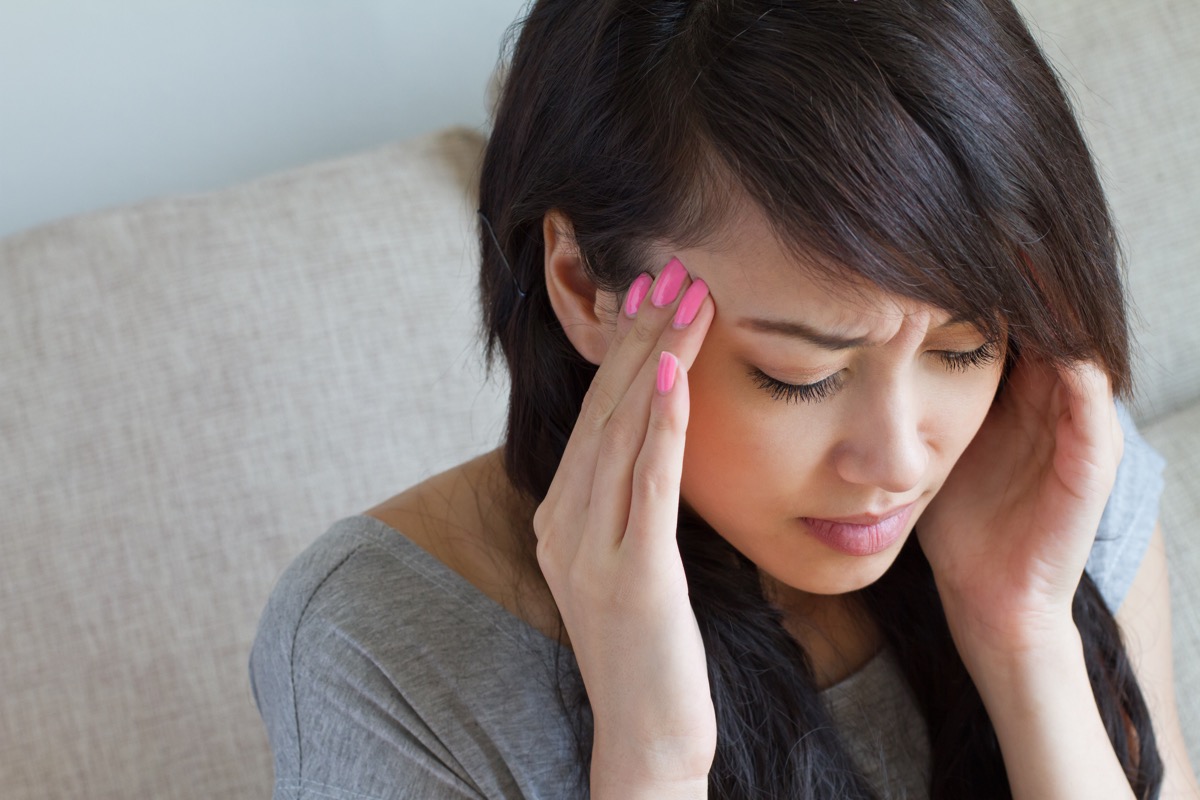But nothing here gives you anything useful to prevent that stroke - migraine with aura.
If You Can See This, Your Stroke Risk Skyrockets, Study Says - migraine with aura.
s
Looking for this shocking symptom of a stroke might just save your life.

Stroke is a leading cause of death and disability around the globe, with approximately 800,000 people suffering a stroke each year in the U.S. alone, according to the Centers for Disease Control and Prevention (CDC). And while you may believe yourself to be at low risk for the condition, experts say that there's one type of stroke that can affect a surprising demographic: younger individuals who are in otherwise good health. That's why medical professionals are sounding the alarm about one particular visual symptom associated with this kind of stroke and the underlying condition that makes it more likely. They say that if you see this one thing, you may need emergency medical assistance. Read on to find out which visual symptom to look out for and which common condition puts you at higher risk—even if you're otherwise healthy.
RELATED: 80 Percent of Strokes Could Be Prevented by Doing These 4 Things, CDC Says.
You may see an aura, flashing lights, or blind spots during a migraine.

Migraines are debilitating headaches that can come with a surprising set of additional symptoms. These often include sensitivity to light and sound, nausea or vomiting, and a throbbing or pulsing sensation on one side of the head. Some migraine sufferers experience a particular type of migraine known as migraine with aura (MA), which comes with additional visual symptoms not experienced by the broader population of people with migraines. Those with MA often "see flashing lights, blind spots, or jagged lines in their visual field prior to onset of their migraine headaches," or during the headache itself, explains a 2021 study published in the journal Neurology.
The relationship between migraines and stroke risk has been well-established for decades. "The first epidemiological suggestion that migraine may be an independent risk factor for stroke came from the Collaborative Group for the Study of Stroke in Young Women, published in 1975, which showed an increased relative risk of stroke with migraine compared with neighbor controls," says one 2011 study. "Since then, the association of migraine with the risk of stroke has been investigated in several observational studies"
RELATED: If You Notice This While Walking, It Could Be the First Sign of a Stroke.
If you see any of these things during a migraine, your stroke risk is high.

While all migraines are distressing to those who experience them, experts now say that having a migraine with aura is particularly troubling since it's linked with increased ischemic stroke risk. Until recently, the reason has been a mystery among experts.
Thankfully, the Neurology study's researchers were able to identify certain factors that may contribute to this relationship. "Investigators found a strong association between four coagulation factors and migraine susceptibility," the researchers wrote. Specifically, they found that "genetically increased levels of three blood clotting factors" as well as "genetically decreased levels of fibrinogen (a protein important in the late stages of the blood clotting process)" were all linked to migraine susceptibility. The team noted that there was no such relationship between these factors and migraines without aura (MO).
For more health news sent directly to your inbox, sign up for our daily newsletter.
Even young, otherwise healthy people with MA are at higher risk of stroke.

Gretchen Tietjen, MD, the chair of the University of Toledo's Department of Neurology shared in a Q&A for the American Migraine Foundation that even if you're young and otherwise healthy, you can still be at high risk of migraine-related stroke. That's because migraine-related stroke and non-migraine-related stroke affect different demographics. "When we look at who's at risk of migraine-related stroke, it is people that don't have conventional risk factors. They tend to be young, under the age of 45, maybe under 35, and women," she said, as opposed to older males, who have the highest overall stroke risk.
Learning stroke warning signs is essential, experts say.
Learning stroke warning signs is essential, experts say.

Tietjen says that those who have experienced MA in the past should be especially conscious of stroke warning signs so they can recognize a problem if one should arise(Too late, what is the prevention?). "People that have migraine with aura, they need to know what the stroke warning signs are. They need to know what the stroke risk factors are so they can at least avoid the things they can control," she advises
No comments:
Post a Comment